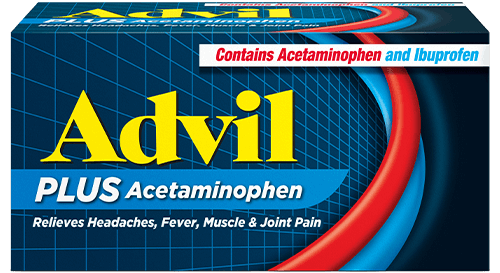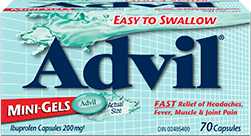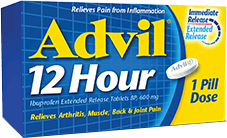Back Pain: Finding Relief
Learn more on the causes and treatments for back pain.
About 85% of Canadian workers will experience back pain at some point in their lives. Problems with any bones, disks, muscles, ligaments, and tendons can lead to back pain, making it a very common problem. The good news is, there are various ways of managing back pain – keep reading to understand more of the causes and solutions to those nagging back problems.
Causes of Back Pain
Low back pain can occur in people who have poor posture, are in poor physical shape, or routinely sit or stand for long periods of time. Muscle strain is another cause of a troubled back, either from lifting something that is too heavy or by lifting objects incorrectly. Many pregnant women develop lower back pain due to the extra weight they support during pregnancy.
Other potential causes of back pain include osteoarthritis (a “wear-and-tear” condition), fractured vertebrae (the literal "broken back"), and “slipped” or herniated discs are all serious medical conditions that must be treated by a qualified physician.
Treating Your Back Pain
No matter what you suspect to be the cause of your pain, the first step in treating it should be to see your doctor. Usually, most short-term back pain improves over time without medical treatment. A typical course of treatment for back pain, which may be accompanied by muscle spasm, could include the following:
- Bed rest for a day or two, though a long period of bed rest is not recommended
- Local application of either heat or cold, depending on the type of injury,
- A massage of the area, especially for a muscle spasm, and/or
- An OTC anti-inflammatory pain medication such as Advil® Liqui-Gels® (which contains ibuprofen) or a prescription anti-inflammatory drug and muscle relaxant.
Avoiding Back Pain
Fortunately, there are some things you can do to help or prevent your back pain. Here are a few tips:
Stretching:
Strong core muscles can help protect your back. It’s important to practice proper posture and body mechanics (the way you position your body as you move through your daily activities). For example:
- Bend at your hips and knees instead of your waist.
- Stand with your feet spread about 30 cm (12 in.) apart to create a stable foundation for your body.
- Make sure your neck, back, pelvis, and feet are aligned when you turn or move.
- Avoid body movements that twist or strain your back.
Lifestyle Tips:
- Exercise, but make sure you do it properly. Regular low-impact aerobic activities will increase strength and endurance and help your muscles function better.
- Abdominal and back exercises will strengthen your core muscles so they can better support and protect your back.
- Maintain a healthy weight to avoid putting extra strain on your back muscles.
- If you have to lift a heavy object, keep your back straight, bend only at the knees, and hold the object close to your body.
Posture:
- Stand with one foot elevated and shift positions often.
- Walk with straight back, shoulders back and wear comfortable shoes.
- Sit with both feet on the floor and your knees at least as high as your hips, and position yourself firmly against the back of the chair.
For more information about muscle aches and pains, explore other articles on our muscle and joint pain section of our website.
Sources:
- Muscle Pain. Mayo Clinic. https://www.mayoclinic.org/symptoms/muscle-pain/basics/causessym-20050866?p=1. Accessed Nov. 21, 2018.
- Sprains and Strains. Mayo Clinic. https://www.mayoclinic.org/diseases-conditions/sprains-and-strains/symptoms-causes/syc-20377938?p=1. Accessed Nov. 21, 2018.
- Sprains and Strains. MedicineNet. https://www.medicinenet.com/sprained_ankle/article.htm#sprains_and_strains_facts. Accessed Nov. 21, 2018.
- The Pain of Strains, Sprains, and Cramps. Harvard Health Publishing. https://www.health.harvard.edu/pain/the-pain-of-strains-sprains-and-cramps. Accessed Nov. 21, 2018.
- Sprain: First Aid. Mayo Clinic. https://www.mayoclinic.org/first-aid/first-aidpsprain/basics/art-20056622?p=1. Accessed Nov. 23, 2018.
- Effective Repetitive Motion Injury Prevention. Safety Services Co. https://www.safetyservicescompany.com/industry-category/construction/keys-preventing-repetitive-motion-injury. Accessed Nov. 22, 2018.
- Exercise 101: Don’t Skip the Warm-up or Cool-down. Harvard Health Publishing. https://www.health.harvard.edu/staying-healthy/exercise-101-dont-skip-the-warm-up-or-cool-down. Accessed Nov. 22, 2018.
- What Are the Causes of Unexplained Muscle Aches? Medical News Today. https://www.medicalnewstoday.com/articles/322869.php. Accessed Dec. 6,2018.
- Johnson LE: Vitamin D. The Merck Professional Version Online. https://www.merckmanuals.com/professional/nutritional-disorders/vitamin-deficiency,-dependency,-and-toxicity/vitamin-d. Accessed March 5, 2019.
Be sure this product is right for you. Always read and follow the directions on the label. This information is provided for educational purposes only and should not be used as a substitute for professional medical advice, diagnosis, or treatment. Speak to your healthcare professional before making any changes to your lifestyle or before beginning or discontinuing any course of treatment. Never disregard professional medical advice or delay in seeking it because of something you have read on this site.






